- g
- The acceleration due to Earth’s gravity, equal to 9.80665 m/s2 (or 32.2 ft/s2) at sea level. Gravitational waves are believed to move at the speed of light, c.
- G#
- For IBM’s G3, G4, and G5 processors, see PowerPC.
- GAAFET
- Gate All-Around Field-Effect Transistor. See transistor.
- GaAs
- Gallium Arsenide. See semiconductor.
- GAL
- Generic Array Logic. See PLD.
- Galileo
- See satnav.
- gamma
- A correction factor used by digital video to optimize pixel luminance for human vision as image brightness varies, similar to the concept of companding. Without it, bright images look washed out, and details in dark images are imperceptible. A gamma of 2.2 is typical for PC monitors.
- GaN
- Gallium Nitride. See semiconductor.
- gateway
- A node that controls access to a network. Most small sub-networks have a router as the gateway, but it can also be a server or a bridge. A home network with a broadband cable or DSL connection to the Internet can consist of a router that controls the local network and a physically separate modem to interface the router to the ISP, or it can be a single gateway unit, also called a modem-router combo, that does both.
- gauge (or gage)
- This can have many meanings, including, in the US, the thickness of sheet metal (and wire – see AWG). Even in this narrow sense the standards disagree, because they’re actually based on weight per square foot. Thickness, in inches, for some common gauges:
- GbE
- Gigabit Ethernet. Under 802.3, see 1000BaseT.
- GBIC
- GigaBit Interface Converter. A transceiver concept from Compaq, Sun, AMP, and Vixel Corp. for converting parallel electrical data on a Fibre Channel device into serial optical or electrical data over a cable. If the cable is copper, the GBIC will have a DE-9 or HSSDC connector; if optical fiber, a dual SC connector. An active (intercabinet) GBIC supports cable runs longer than 13m. A passive (intracabinet) GBIC has less shielding and lower voltage, and doesn’t support long cable connections. A GBIC DE-9 connector has TxD+ on pin 1, TxD- on pin 6, RxD+ on pin 5, and RxD- on pin 9.
- GBL
- Ground-Based Laser.
- gcc
- GNU Compiler Collection (originally GNU C Compiler). The compiler program for GNU. Modern versions handle other programming languages in addition to C, hence the name change. See glibc.
- GCN
- Graphics Core Next. Starting in 2012, AMD’s architecture for its 7000-series graphics, including the integrated graphics of its APUs.
- GCP
- Google Cloud Platform. Google’s (or, rather, Alphabet’s) cloud computing business.
- GCR
- Galactic Cosmic Rays. Fast-moving, ionized particles (protons, helium nuclei, electrons, positrons, and the nuclei of heavier elements) that originate outside the solar system and have energies exceeding 1 GeV (109 electron-volts). They can affect unshielded microelectronics, or alter magnetic memory cells.
- The most powerful cosmic rays ever detected have had energies exceeding 1020 eV. As of 2023, there is no accepted scientific explanation for what could be producing them.
- GDDR#
- Graphics Double Data Rate version #. A high-performance synchronous DRAM family designed to serve as VRAM on graphics cards, to provide specialized support for increasingly powerful GPUs.
- The original 2.5 V GDDR and GDDR2 were little used. GDDR3, based on DDR2, requires 1.8 V and has clock speeds of 500 to 800 MHz. GDDR4 and the more popular 1.5 V GDDR5 are based on DDR3.
- GDDR5X, created (2016) by Micron, extends GDDR5 by using a QDR bus with doubled prefetch, and achieves data rates of 10 to 12 Gb/s. It’s intended to rival the still-emerging HBM in the video market, although it can’t match HBM’s lower power consumption.
- GDDR6 (2017) splits data into two 16-bit channels rather than one 32-bit channel, uses PAM-2 signaling and 1.35V power, and achieves a modest speed increase to as much as 16 Gb/s. GDDR6X instead uses PAM-4 signaling (two bits per clock cycle), increasing throughput to maximum ~23 Gb/s.
- GDDR7 (expected 2024) will provide 32 to 36 Gb/s throughput using PAM-3 signaling (three bits per two clock cycles).
- GDPR
- General Data Protection Regulation. A European Union (EU) privacy regulation enacted in 2016, and legally enforceable as of 25 May 2018.
- GDS
- (1)
- Graphic Data System. The ancestor of the more important GDSII.
- (2)
- Global Directory Service. A central directory that provides network data access.
- GDSII
- Graphic Database System 2. A database file format dating to the 1970s that, because it represents geometric shapes, is widely used as a stream format to describe photoresist masks for 2-D circuit layouts, hence to manufacture ICs. The files are produced from RTL code. Almost all EDA software supports GDSII. Compare OASIS.
- GEL
- General Extension Language. A Texas Instruments proprietary programming language based on C, for configuring and adding scripts to TI IDEs. TI’s Code Composer Studio (CCS) employs GEL to set up the debugger memory map, initialize target state, and evaluate addresses, variable names, and conditions. A GEL file will have an OnStartup() function that CCS runs when it starts the debugger, and an OnTargetConnect() function that it calls when connecting to the target. The files have the .gel filename extension. See http://processors.wiki.ti.com/index.php/GEL for more.
- GEM
- Graphics-Enabled Microprocessor. A microprocessor with integrated graphics (IGP), what AMD calls an APU. The first in wide use were Intel’s 2011 Sandy Bridge generation of its Core i3 and i5. Earlier i3 and i5 models had the graphics sharing a multi-chip module with the CPU, but putting both components on one die speeds up their communication and coordination.
- generator
- A device that converts motion into electricity, usually via induction. The motion can be provided by a steam turbine, fuel-burning engine, water, wind, etc. Compare engine, motor. Also see alternator, dynamo.
- GEO
- Geosynchronous or Geostationary Earth Orbit. The orbit of a geosynchronous satellite follows the equator at an average angular velocity matching Earth’s rotation: about 0.00007292 radians/s, which translates to about 3.075 km/s at orbital altitude. This gives it a 24-hour period, keeping it continually above the same region of the Earth, while its altitude gives it a view of roughly one third of the globe. A geostationary satellite is a special case of geosynchronicity: A circular orbit (eccentricity and inclination near zero) at a constant altitude of 35,786 km, or 22,300 miles, eliminating positional wobble caused by fluctuations of speed and altitude. Signals passing through a GEO satellite incur a ¼- to ½-second round-trip delay.
- Gerber file
- Named for Joseph Gerber, the inventor of the first photoplotter in the 1960s. An ASCII-format text file generated by circuit-design software, containing instructions for a plotter to produce the lithography mask for an integrated circuit or for a router to create a circuit board.
- G.fast
- See DSL.
- GFCI
- Ground Fault Circuit Interrupter. Another name for a GFI. Sometimes means a GFI circuit breaker.
- GFI
- Ground Fault Interrupter. Also called a ground fault or earth fault circuit interrupter (GFCI or EFCI), residual current device (RCD), or residual-current circuit breaker (RCCB). A device that breaks the circuit to an electrical outlet if it detects an imbalance in current between the line (power in, or hot) and neutral (return) wires. This stops even small current leaks to ground, including any that pass through people. The NEC, which requires GFI outlets in areas where moisture is a concern – bathrooms, kitchens, outside – sets the trigger differential at 4 to 6 mA.
- Each GFI outlet has its own reset button, as shown in the figure. The button pops out when the GFI trips, and must be pushed in again to restore power. Some buttons also have LEDs to indicate their condition. The trigger level being on the cautious side, false trips occur. GFIs can be built into power cables as well as into outlets, or can be stand-alone devices for plugging into unprotected outlets. Compare AFCI.
- A GFI circuit breaker protects an entire circuit rather than an individual outlet, hence is installed in the building circuit panel. Unlike a standard circuit breaker, which trips only in response to an overload or short-circuit condition, it detects current imbalance for any outlet on its circuit, and responds by shutting off power to all of them. The outlets it protects have no reset button, so a reset requires going to the circuit panel.
- GFLOPS
- Billions of Floating-point Operations Per Second. See FLOPS.
- GFSK
- Gaussian (shaped or filtered) Frequency Shift Keying. The initially square pulses of NRZ data pass through a Gaussian LPF, and these shaped pulses FM-modulate a carrier wave. Two-state and four-state GFSK (2GFSK and 4GFSK) are used for frequency-hopping spread-spectrum (FHSS) transmission under the IEEE 802.11b wireless LAN standard. GFSK is also used for Bluetooth. See CPM.
- GHP
- Geothermal Heat Pump. See GSHP.
- GHz
- Gigahertz. 109 hertz.
- GiB
- Gibibyte. See byte.
- GID
- Group Identifier. In Unix and related operating systems, a number specifying a group of users, for purposes of assigning common security permission settings. Every running process is assigned to a GID and also a UID.
- GIF
- Graphical Interchange Format. A 1987 lossless compression & storage standard for image and frame-by-frame animation files, based on the LZW algorithm (patented 1985). At 8 bits per pixel, it supports just 256 colors, so it’s not good for storing photographs. There’s a technique to get around this by treating the image as a set of tiles, each with its own palette, and sometimes overlapping one another. This can result in very large files, and, because it’s not part of the standard, image-rendering software might be unable to interpret the result. The 7th & 8th bytes of a .gif file are image width in pixels, and the 9th & 10th bytes are height.
- Gigabit Ethernet
- See 802.3.
- GIMP
- GNU Image Manipulation Program. The standard image editor for the GNU/Linux operating system.
- GitHub
- A free online hosting platform at www.github.com, acquired by Microsoft in 2018. It’s the largest open-source hosting service as of 2023, and is a popular tool for the open-source community to manage distributed software development – i.e., projects with multiple developers. Users manage projects on the platform through version-control software called Git, which can run from the command line or through a GUI app called GitHub Desktop.
- glibc
- GNU C Library. The library of standard C functions, system calls, etc. provided with GNU and used in GNU/Linux programming. See gcc.
- Globalstar
- Worldwide mobile phone service, launched in 1998, went bankrupt, bought in 12/2003 by the shadowy Thermo Capital Partners LLC. Has (optimally) 48 birds and 4 on-orbit spares in eight 1406-km altitude, 114-minute period LEO orbital planes inclined 52° from the equator, that act as bent-pipe relays between the user and more than 100 ground stations tied to the terrestrial phone network. The user must be within 3000 km of a ground station and between 70° N and 70° S, so coverage is not available everywhere (e.g. Sub-Saharan Africa). Ground stations note the location of users. The Globalstar ground operations control center (GOCC) is in San Jose, CA.
- The system’s QPSK signals use a combination of FDMA and CDMA: frequency-divided 1.25 MHz sub-bands, each hosting a spread-spectrum CDMA mux. Mobile units use 1610.0-1626.5 MHz (L-band) uplink and 2483.5-2500.0 MHz (S-band) downlink. Ground stations use 5091-5250 MHz uplink and 6875-7055 MHz downlink.
- Globalstar achieves consistently higher voice & data quality than Iridium, with data at 9600 b/s, but as of 2007 is having trouble with on-orbit S-band transmitters that might soon reduce customers to transmit-only capability. Compare ICO, Inmarsat, Iridium, Orbcomm.
- GLONASS
- See satnav.
- GLV
- Grating Light Valve. A 2004 display technology that uses MEMS to control and direct light from three semiconductor lasers (red green blue), projecting an image onto a screen or other surface one line at a time.
- GMA
- Graphics Media Accelerator. A family of integrated graphics processors from Intel. See IGP.
- GMII
- Gigabit Media Independent Interface. See MII.
- GMPCS
- Global Mobile Personal Communications Services. A term that refers to future mobile satellite systems that will provide wireless phone service anywhere in the world.
- GMPLS
- Generalized Multi-Protocol Label Switching. See MPLS.
- GMR
- Giant Magneto-Resistance. When two ferromagnetic conducting channels are separated by a metallic but non-magnetic (e.g., copper) film just a few atoms thick, and the magnetic fields of the channels have the same orientation, a quantum tunneling current can develop across the barrier. When the fields have opposite orientation, resistance to the tunneling current increases dramatically. This effect, discovered in 1988, is GMR. It was the dominant technology for the read heads of hard disk drives in the early 2000s before being supplanted by EMR and TMR. See also MRAM.
- GMSK
- Gaussian Minimum Shift Keying. A blend of MSK and GFSK employed by some cellular systems, including GSM and CDPD. Instead of MSK’s sinusoidal filtering, it applies Gaussian filtering to its input NRZ data pulses, so that the modulated signal’s rate of phase change is limited with a Gaussian response. This results in a narrower bandwidth and less interference between adjacent channels, although it might mean falling short of a full 90° phase shift from bit to bit. See CPM.
- GMT
- Greenwich Mean Time. See UTC.
- GND
- Ground. See grounding.
- GNSS
- Global Navigation Satellite System. Same thing as satnav.
- GNU
- GNU’s Not Unix. (Recursive acronyms are a hacker tradition dating to the 1970s.) A Unix-like OS developed by the Free Software Foundation (FSF), and pronounced “guh-NOO”. It was wedded to the Linux kernel to produce the GNU/Linux OS, popularly called just Linux.
- GNU is modular and scalable – that is, users can install only the features they need. Important features include the LessTif toolkit, the Bourne Again Shell (BASH), the GNU Network Object Model Environment (GNOME) for desktop facilities, and the Harmony and Qt toolkit libraries, all issued under the GNU GPL. There are many less well-known packages, such as GNU Radio, a toolkit for signal processing and software-defined radio applications.
- Golay code
- A perfect FEC block code with data block length k = 12 and codeword length n = 23.
- Gold code
- A pseudo-random sequence (see LFSR) used as the spreading code for a direct-sequence spread-spectrum (DSSS) signal. N-length Gold codes are produced by XORing a preferred pair of maximal N-length sequences G1 and G2 (length N = 2n – 1, where n is the number of stages in each of the two LFSRs that produce the pair). A preferred pair is identified by the property that, for any bit shift, their cross-correlation produces one of just three values: –1, and ±2[n+2]/2. G1 and G2 can be used to generate a total of 2n + 1 Gold codes by delaying one sequence with respect to the other before the XOR step. Varying the initial fill of one LFSR produces the same result as introducing delays. The figure below shows a 31-bit Gold code generator using Galois configuration and the generating polynomials x5 + x3 + 1 and x5 + x4 + x3 + x2 + 1.
- Golden Mean
- A recurring proportion in classical art and in nature: the ratio of any two numbers A and B such that A/B = (A + B)/A. Numerically, this ratio is [1 + 5½]/2 ≈ 1.618. Also called the Golden Ratio, phi (φ), or sometimes mu (μ). See Fibonacci sequence.
- Gopher
- Named for the Golden Gophers, the sports teams at U. of Minnesota, where Gopher was created in 1991. A member of the TCP/IP protocol suite at the Application layer, this text-based, menu-driven, client/server search protocol was popular on the Internet before HTTP and the WWW, but was almost extinct by 2006. A Gopher client accesses and tunnels through hierarchical databases of document descriptions, allowing users to narrow down the search. Gopher can run an Archie client session to access FTP indexes on Archie servers. A program called Veronica is used to search Gopherspace, the world of Gopher menus. See also Jughead.
- GP
- Generating Polynomial. A polynomial used to generate a code sequence. It specifies the tap points to use in a linear feedback shift register for producing the code. See convolutional code, CRC, LFSR.
- GPGPU
- General-Purpose computation on Graphics Processing Units. See GPU.
- GPIB
- General Purpose Interface Bus. Also called EIA-488, IEEE-488.1, and HP-IB. A popular standard for controlling electronic instruments via computer. The bus has 24 TTL-compatible lines – 8 data, 8 ground, 5 control, and 3 handshaking. Every device on the bus is either a talker, a listener, or a controller (only one controller at a time is allowed). The controller can change the configuration of other devices, including relinquishing control to another device. The controller issues ASCII command strings. Device responses can be ASCII or binary.
- GPIO
- General Purpose Input/Output. Refers to pins on a microcontroller or microprocessor that are to be defined by software rather than having a fixed purpose.
- GPL
- General Public License. A free software project started by the FSF to protect open-source releases from any future proprietary licensing attempts. GNU (the OS combined with the Linux kernel) was issued under GPL. Any software even partially derived from GPL-protected software must also comply with GPL procedures, which includes releasing the source code. This scheme is popularly referred to as “copyleft”.
- GPMI
- General Purpose Media Interface. (2025) A media cable interface created by an alliance of Chinese companies to support 8K graphics and to also supply power. It has two connector types: a proprietary Type B, and a Type C that’s compatible with USB-C. It’s claimed to provide up to 192 Gb/s throughput and up to 480W DC power.
- GPON
- Gigabit Passive Optical Network. See EPON, PON.
- GPP
- General Purpose Processor. As opposed to a DSP or other specialist processor.
- GPR
- General-Purpose Register. In a microprocessor, a data-storage structure that software can use for any purpose, as opposed to a special function register (SFR).
- GPRS
- General Packet Radio Service. A 1998 ETSI standard for connectionless (packet-switched) access to networks with circuit-switched 2G cellular phones, primarily GSM and IS-136. It allows 2G systems to work with packet-switched 3G, using GSM modulation and data rates up to 115 kb/s. It requires new subscriber handsets, but little change to existing base stations.
- GPS
- Global Positioning System. See satnav.
- GPT
- GUID Partition Table. The UEFI standard for partitioning a bootable hard drive or solid state drive, as opposed to the MBR-based approach of the old IBM drive partitioning scheme. It uses 16-byte GUIDs to uniquely identify the disk and to specify the types of its partitions.
- GPT reserves the first sector of the drive for a MBR, and protects it from accidental or malicious overwriting.
- GPT-#
- Generative Pre-trained Transformer. A large language model (LLM) created by OpenAI, a California company, for using machine-learning AI to interpret natural-language queries and respond with relevant text that reads as though a human wrote it. The model’s self-training requires an enormous quantity of examples, so it relies on Internet source material. This introduces biases and factual errors into its output, a problem researchers have not yet found a way past. GPT-2 was released in 2019, GPT-3 in 2020, and GPT-4 in 2023.
- GPT-3 was the basis for OpenAI’s ChatGPT at its release in 2022, later replaced with GPT-3.5, and hosted here. This popular Web application can accurately interpret all manner of natural-language queries, and respond in the user-requested format – not only prose text but music, lyrics, poetry, stories, essays, or computer code. Other companies have licensed GPT models to power their own search and query applications. Implementations of GPT-4 can accept or produce images as well as text.
- GPU
- Graphics Processing Unit. A co-processor designed to handle computer graphics, taking the load off the CPU and main memory. Many modern CPUs have an on-die GPU, aka integrated graphics processor, making them what AMD has taken to calling APUs. Those that lack on-die graphics require that the system provide it, whether on a discrete graphics card or in the motherboard chipset. Discrete cards offer the most powerful GPUs, for applications that require high frame rate, resolution, and display size.
- To address its very different computing environment, there are GPU-specific programming languages such as OpenCL (Open Computing Language), NVidia’s CUDA (Compute Unified Device Architecture, originally), and AMD’s open-source ROCm, each with its own IDE.
- Because GPUs must be able to process large blocks of data in parallel, they’re better suited than CPUs to certain classes of computations that arise in physics, cryptography, biology, and other fields, most famously the creation of bitcoins. These non-graphics applications are called GPGPU (General-Purpose computation on GPUs).
- As of 2025, the market for discrete GPUs is and for many years has been dominated by two companies, AMD and NVidia, but they don’t sell directly to end users. Instead, they’re the OEM for graphics cards sold by various other companies, most of them in Taiwan or China.
- graphene
- A material made of carbon atoms bonded in hexagonal rings, interlocking in a uniform sheet one atom thick. It’s stronger than steel, transparent at optical frequencies, has exceptional electrical conductivity at room temperature, and is an excellent heat conductor. Two parallel sheets with a 1.1° rotation in the relative alignment of their cell structures can exhibit low-temperature superconductivity. Graphene might also be capable of ferromagnetism created by correctly placed vacancies in the lattice. See nanotube, fullerene.
- Graphene is ambipolar, i.e., able to carry either electrons or holes without doping, but, unlike semiconductors, doesn’t have an exploitable band gap. However, it does exhibit negative resistance (increasing current decreases voltage) under certain circumstances. It also can support the propagation of spin alignment over micron-scale distances better than any other known material. Researchers predict low-power graphene logic circuits with clock speeds in the hundreds of GHz based on such traits.
- Common graphite is made up of fragments of graphene, but lacks these remarkable properties, because they hold only within a single layer. Manufacturing graphene in consistent, usable form is proving difficult.
- graphics
- Technology that allows a computer to display images on a monitor. Two standard parameters for describing a display are the pixel resolution (the number of pixels, width × height) and the aspect ratio (scaled width:height). Analog NTSC TV uses an aspect ratio of 4:3, but analog graphics displays didn’t try to meet this standard until VGA. Digital graphics added support for HD (high definition) displays of widescreen movies and HDTV, which have aspect ratios of 16:10 or 16:9. 16:9 has become the more popular of the two.
- The table below lists pixel resolutions for most monitor and digital TV sizes. (Terms such as 1080i, 720p, and 480p refer only to digital TV, not PC monitors – see ATSC for particulars.)
- A computer can change its display resolution, but the graphics perform best at the native resolution of the monitor, because that means each display pixel is assigned to one and only one physical pixel. An image or character is typically defined as some fixed number of pixels. That’s why it changes size if the display goes to a different resolution with the same aspect ratio: it has the same number of pixels, but they’re larger or smaller. Setting the display to a different aspect ratio than that of the monitor leaves parts of the screen unused or, with an older graphics adapter, distorts the image.
- Below are PC graphics technologies in chronological order. SVGA is obsolete but still (2010) in use. Everything before it is history.
- MDA – Monochrome Display Adapter. 1981, IBM. A monitor and ISA expansion card with 4 kB of VRAM that supported an 80-column, 25-line, ASCII text display (no images) in 720 × 350 pixels, at 50 Hz vertical refresh rate.
- CGA – Color Graphics Adapter. 1981, IBM. A monitor and ISA expansion card with 16 kB of VRAM that displayed 4 out of a palette of 16 colors with 320 × 200 pixel resolution (40 × 25 characters), or 2 colors with 640 × 200 (80 × 25 characters), at 60 Hz vertical refresh rate. Its text quality was poorer than MDA’s. Also called RGB.
- MGA – Monochrome Graphics Adapter. 1982, Hercules Computer Technology. The Hercules graphics card and monitor, for early IBM PCs and clones, duplicated MDA for text displays and supported 720 × 348 pixel monochrome graphics, with the capability to emulate CGA (albeit in monochrome). It also cost less than IBM’s graphics. IBM later came out with the Multicolor Graphics Adapter, perhaps just to muddy the waters.
- EGA – Enhanced Graphics Adapter. 1985, IBM. The monitor and ISA expansion card that supplanted MDA and CGA. EGA used a DE-9 connector with TTL signal levels and 60 Hz vertical refresh rate, and supported 16 out of a palette of 64 colors at 640 × 350 pixel resolution, or up to 64 at lesser resolutions. It could use up to 256 kB of VRAM.
- 8514/A – 1987, IBM. 256 colors. 1024 × 768 resolution with 43.5 Hz refresh rate; or 640 × 480 with 60 Hz non-interlaced refresh rate. Little used.
- VGA – Video Graphics Array. 1987, IBM. The first to use the NTSC 4:3 aspect ratio and a HD-15 connector. The original VGA has a 60 Hz refresh rate, and supports 256 colors at 320 × 200 pixel resolution; or 16 colors at 640 × 480 (4:3) resolution, the size for a 14" monitor; or monochrome (character) mode at 720 × 400 resolution. Each of the three electron beams (red, green, & blue) has 64 levels of intensity, giving the display a palette of 643 = 262,144 (256k) different colors. On a 16-bit ISA bus, only 216 = 65,536 different colors can be on screen at one time. Later variants of VGA support a 70 or 72 Hz refresh rate, 15- or 16-bit high color, and 24-bit true color, which require larger VRAM and much faster video cards.
- XGA – Extended Graphics Array. 1990, IBM proprietary. Works only with MCA bus systems, and therefore only on IBM machines, so it was never popular. It supports 256 colors at 1024 × 768 resolution, with interlacing. The later XGA-2 was non-interlaced. WXGA (Wide XGA) supports 1280 × 800, SXGA (Super XGA) 1280 × 1024, and UXGA (Ultra XGA) 1600 × 1200. They all support 16 million colors, and were established by VESA, not by IBM.
- SVGA – Super Video Graphics Array. 1990, from an industry consortium named VESA. This improvement on VGA at first supported just 16 colors at 800 × 600 pixel resolution (typical of a 15" monitor), but later added 1024 × 768, 1280 × 1024, 1600 × 1200 (standard for 17", 19", and 21" monitors), and even higher, and up to 16 million colors. The limiting factors are the amount of VRAM and the number of colors desired at a given resolution. Early SVGA cards required vendor-specific device drivers. Like VGA, it uses the HD-15 connector.
- DFP – Digital Flat Panel. 1999, VESA. Digital, with a 20-pin connector, supporting a maximum 1280 × 1024 pixel resolution. Superseded by DVI.
- DVI – Digital Visual Interface. 1999, Digital Display Working Group (DDWG). Standard for flat-panel digital monitors. DVI-A is just an analog-only VGA signal; DVI-D is digital-only, using transition minimized differential signaling (TMDS); and DVI-I (integrated) supports both. With 24-bit color, 60 Hz refresh rate, and cable length less than 10 m, digital single-link DVI supports 2.75 megapixels (up to 1920 × 1200 pixel resolution, which is HD 16:10 aspect ratio), and dual-link DVI supports 4 megapixels (up to 2560 × 1600 pixels, also HD 16:10). At 85 Hz, maximum resolution is 1280 × 1024 single or 1920 × 1080 dual. Female ports are shown below.
- Apple created mini-DVI and micro-DVI connectors for some of its products. The signals are compatible with DVI-D.
- HDMI – High-Definition Multimedia Interface. 2003. An interface standard for digital monitors and other video outputs, designed to support copy protection and encryption, specifically HDCP. It carries audio as well as video. HDMI 1.0 defines two types. Type A has 19 pins, and the signal (though not the connector itself) is compatible with single-link DVI. The little-used type B has 29 pins to support resolutions higher than 1920 × 1080, and is compatible with dual-link DVI.
- HDMI 1.3 added the HDMI mini (type C) connector, a miniature version for portable devices – still 19 pins, but with a different pinout. HDMI 1.4 (2009) is mainly changes to support 3D graphics, but added the HDMI micro (type D) connector, again 19 pins but with a new pinout. HDMI 2.0 (2013) increases throughput to 6 Gb/s per channel and 18 Gb/s maximum, and handles displays up to 2160 pixels high (2160p). HDMI 2.1 (2017) supports 4K and 8K video at 120 Hz refresh rate, but it’s common for devices to be advertised as HDMI 2.1 despite lacking features that version is supposed to have. Old HDMI cables will probably support the newer versions.
- DisplayPort – A 2006 VESA standard for PC audio & video, with built-in support for DRM. It uses a 20-pin rectangular connector with an annoying resemblance to an HDMI connector. Version 1.0’s four lanes of differential serial data have an 8.64 Gb/s data rate. Version 1.2 (2010), along with doubling the data rate, added support for the Apple mini DisplayPort (MDP) connector. This connector is also used for the Thunderbolt peripheral bus standard. Thunderbolt ports and cables have a lightning-bolt icon to distinguish them. DisplayPort ports and cables don’t support Thunderbolt devices, but Thunderbolt supports DisplayPort devices.
- There are several later 1.x versions, with increasing speeds and backward compatibility. Version 2.0 (2019) claims a 77.37 Gb/s data rate.
- Gray coding
- Named for American physicist Frank Gray (1887-1969). The standard practice, in digital modulation schemes with two or more bits per symbol, of assigning bit groups so that symbols with the smallest free Euclidean distance (i.e. the ones most likely to be confused with each other) differ by only 1 bit. This reduces errors. Almost everything in communications design involves tradeoffs, but the modest gain from Gray coding is free.
- great circle
- The circle formed by the intersection of a sphere’s surface with a plane that passes through the sphere’s center. Earth’s great circle (around the equator – even measuring to sea level, Earth is not a perfect sphere) has a circumference of 60 × 360 = 21,600 international nautical miles, or about 40,000 km.
- Greek alphabet
- Engineers, scientists, and mathematicians use the 24 standard letters of the Greek alphabet, especially the lower-case letters, as symbols for many different concepts and variables. Some of the most common uses:
- Α, α – Alpha. α (alpha particle) represents a helium nucleus.
- Β, β – Beta. β (beta particle) represents a free electron.
- Γ, γ – Gamma.
- Δ, δ – Delta. Δ as a prefix indicates change.
- Ε, ε – Epsilon. ε is electrical permittivity.
- Ζ, ζ – Zeta.
- Η, η – Eta.
- Θ, θ – Theta. θ is geometric angle, usually in degrees.
- Ι, ι – Iota.
- Κ, κ – Kappa.
- Λ, λ – Lamda. λ is RF wavelength.
- Μ, μ – Mu (mi). μ as a prefix reads “micro”, meaning a factor of 10-6.
- Ν, ν – Nu (ni).
- Ξ, ξ – Xi.
- Ο, ο – Omicron.
- Π, π – Pi. Π is the series-product symbol used in calculus. π is the ratio of a circle’s circumference to its diameter; see pi.
- Ρ, ρ – Rho.
- Σ, σ – Sigma. Σ is the series-summation symbol used in calculus; σ is used to represent standard deviation.
- Τ, τ – Tau (taf). τ is the ratio of a circle’s circumference to its radius. Some sources prefer using τ rather than 2π in equations.
- Υ, υ – Upsilon (ypsilon).
- Φ, φ – Phi. φ is the Golden Mean.
- Χ, χ – Chi.
- Ψ, ψ – Psi.
- Ω, ω – Omega. Ω is electrical resistance in ohms. ω is phase angle, usually in radians.
- Wikipedia lists many more possible meanings. There’s also this alternate point of view.
- Greenwood frequency
- The roll-off frequency fG that an adaptive optics (AO) system requires to keep the variance of uncorrected, residual phase distortion under 1 radian square. It’s used to characterize the rate of change of distortion in optical wavelengths due to atmospheric conditions.
- grounding
- The surprisingly tricky topic of providing a good earth ground and/or reference ground for an electrical or electronic system.
- Earth ground, as the name suggests, has a solid electrical connection to the earth. The NEC standard is a conducting rod or pipe driven at least 8 feet into the earth. Using something else (e.g., a large mass of metal) that can serve as a charge reservoir works, but can lead to trouble. At the panel of an AC circuit, earth ground is also tied to the neutral (return) line, which runs to the center tap of the transformer supplying the circuit. Any appliance with a metal chassis (IEC Class I) should connect it to the ground wire. If the hot wire shorts to the case, it then has a very low-resistance path through the ground wire back to the neutral line; current will surge, tripping the circuit breaker or, in older circuits, blowing the fuse, without allowing the case to become a shock hazard. This is not the same as a GFI, and the earth does not act as a current sink in this scenario.
- Reference ground is a zero-voltage point for comparing signal levels to. In most circuits, it makes no difference whether it’s tied to earth ground or not. In high-frequency circuits, make a ground plane available throughout so that reference connections to it are as short as possible. At low frequencies, you can get away with star grounding, tying all references directly to the point at which reference ground enters the circuit. Daisy-chain grounding, and grounding high- and low-frequency signals to the same point, are no-nos. In cables, especially with long distances or weak signals, ground the cable shielding at one end only. Pass the reference ground through as a signal, but keep it isolated at the far end. If tying RF reference ground to earth, beware of 1/4-wavelength wire runs.
- ground loop
- An undesirable phenomenon that occurs when devices with separately grounded power sources are linked, or a DC ground is tied to chassis/earth ground at multiple locations. Potential differences at separate locations result in a current flowing through the ground plane of the system. A common sign of this or some other grounding problem is power-line (60 Hz) noise in the circuit. See coaxial.
- group delay
- A filter, like any device, causes a small time delay for a signal passing through it. When a filter causes a delay that varies with signal frequency, this is a group delay. Unlike a uniform delay, it distorts signals, and must be compensated for.
- GSHP
- Ground Source Heat Pump. Also called geo-exchange, ground-coupled, or geothermal heat pump (GHP). A heating & cooling system that, instead of outside air, uses Earth’s near-constant temperature as a heat source & sink. A liquid circulating in buried polyethylene pipes exchanges heat between ground and inside air. Open-loop systems take in and discharge ground water, or sometimes surface water. The more common closed-loop systems recirculate a water-antifreeze mix.
- GSM
- Groupe Spéciale Mobile (originally), now Global System for Mobile communications. A 2nd generation (2G), circuit-switched European standard for digital cellular phones, deployed world-wide. It’s the most common standard in the US and many other places as of 2010. Basic GSM uses GMSK modulation and TDMA. It has 124 channels (8 users per channel) with 200 kHz channel spacing, receiving channels at 925-960 MHz, and transmitting channels at 880-915 MHz. Maximum channel rate is 207.833 kb/s.
- In the US, some GSM networks operate in the 1900 MHz PCS band, and many other countries have the GSM derivative called DCS-1800, which uses the 1800 MHz band. Dual-band and tri-band phones exist to work with all of these. Most GSM networks have been upgraded with EDGE technology.
- GTAW
- Gas Tungsten Arc Welding. See TIG.
- GTD
- Geometrical Theory of Diffraction. Used to model signal energy diffracted by an edge.
- GTL
- Gunning Transceiver Logic. See logic family.
- gTLD
- Generic Top-Level Domain. See DNS.
- GT/s
- Giga-Transfers per second. See T/s.
- GUI
- Graphical User Interface. An interactive, visual menu through which users control software. Most modern operating systems provide a GUI. Contrast CLI.
- GUID
- Globally Unique Identifier. Also called a UUID (Universally Unique ID). An Open Software Foundation (OSF) standard for creating almost-certainly-unique, 128-bit ID tags for data objects that programs need to keep track of. Unlike the shorter PID and VID of USB devices, they cost nothing and are not registered with any central authority.
- Gx86
- 1997 PC-on-a-chip concept from Cyrix: a scaled-down 6x86 with built-in SVGA graphics, PCI, 16-bit sound.
| Gauge | Mild Steel | Galvanized Steel | Aluminum | Stainless Steel |
| 3 | .2391 | .2294 | .2500 | |
| 4 | .2242 | .2043 | .2344 | |
| 6 | .1943 | .1620 | .2031 | |
| 8 | .1644 | .1680 | .1285 | .1719 |
| 10 | .1345 | .1382 | .1019 | .1406 |
| 11 | .1196 | .1233 | .0907 | .1250 |
| 12 | .1046 | .1084 | .0808 | .1094 |
| 14 | .0747 | .0785 | .0641 | .0781 |
| 16 | .0598 | .0635 | .0508 | .0625 |
| 18 | .0478 | .0516 | .0403 | .0500 |
| 20 | .0359 | .0396 | .0320 | .0375 |
| 22 | .0299 | .0336 | .0253 | .0312 |
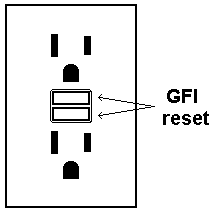

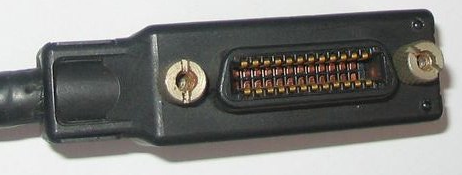
| Resolution | Aspect | Pixels | Name | Optimal For |
| 320 × 200 | – | 64,000 | CGA | |
| 320 × 240 | 4:3 | 76,800 | ||
| 350 × 240 | 84,000 | |||
| 640 × 350 | 224,000 | EGA | ||
| 640 × 480 | 4:3 | 307,200 | VGA | 14" monitor |
| 800 × 600 | 4:3 | 480,000 | SVGA | 15" monitor |
| 800 × 640 | 5:4 | 512,000 | ||
| 832 × 624 | 4:3 | 519,168 | ||
| 1024 × 768 | 4:3 | 786,432 | XGA+ | 17" monitor |
| 1152 × 864 | 4:3 | 995,328 | ||
| 1280 × 960 | 4:3 | 1,228,800 | UVGA or SXGA- | |
| 1280 × 1024 | 5:4 | 1,310,720 | SXGA | 19" monitor |
| 1400 × 1050 | 4:3 | 1,470,000 | SXGA+ | |
| 1600 × 1200 | 4:3 | 1,920,000 | UXGA | 21" monitor |
| 1920 × 1440 | 4:3 | 2,764,800 | ||
| 2048 × 1536 | 4:3 | 3,145,728 | QXGA | |
| 2560 × 2048 | 5:4 | 5,242,880 | QSXGA | |
| 3200 × 2400 | 4:3 | 7,680,000 | QUXGA | |
| 1280 × 720 | 16:9 (HD) | 921,600 | WXGA | |
| 1280 × 800 | 16:10 (HD) | 1,024,000 | WXGA | |
| 1440 × 900 | 16:10 (HD) | 1,296,000 | WXGA+ | |
| 1600 × 900 | 16:9 (HD) | 1,440,000 | HD+ | |
| 1680 × 1050 | 16:10 (HD) | 1,764,000 | WSXGA+ | |
| 1920 × 1080 | 16:9 (HD) | 2,073,600 | FHD (“2K” HD) | |
| 1920 × 1200 | 16:10 (HD) | 2,304,000 | WUXGA | |
| 2048 × 1152 | 16:9 (HD) | 2,359,296 | QWXGA or 2K | |
| 2560 × 1440 | 16:9 (HD) | 3,686,400 | WQHD | |
| 2560 × 1600 | 16:10 (HD) | 4,096,000 | WQXGA | |
| 3840 × 2160 | 16:9 (HD) | 8,294,400 | UHD (Ultra HD), “4K” | |
| 7680 × 4320 | 16:9 (HD) | 33,177,600 | “8K” UHD (QUHD) |
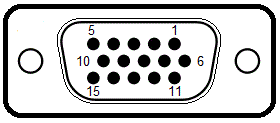








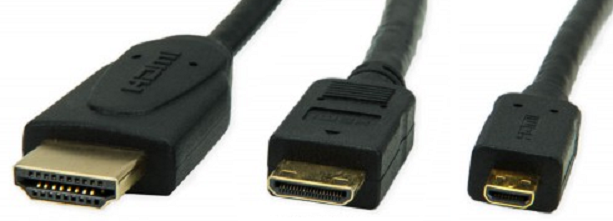
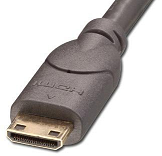
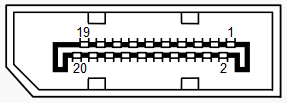
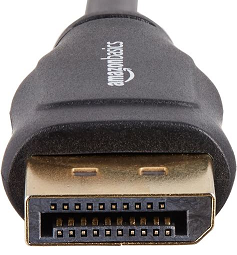
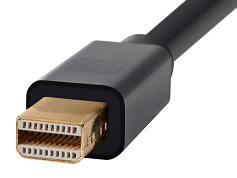




Schematic symbols for the three ground types